The Rebersburg Fulgurite - Research
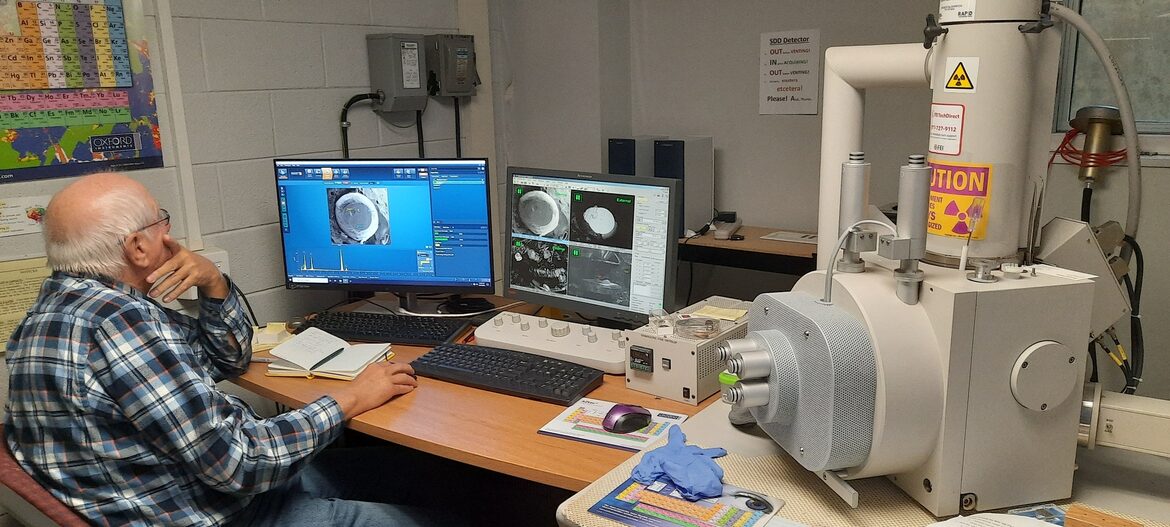
Ron Sloto from the Department of Earth and Space Sciences, West Chester University, West Chester, Pa. analyzes the Rebersburg Fulgurite at the West Chester University Center for Microanalysis and Imaging Research and Training
Geochemical analysis of fulgurite glass, soil, and rock fragments was performed at Lock Haven
University using a Tescan scanning electron microscope (SEM) with an Oxford Instruments INCA
energy-dispersive X-ray spectrometer (EDS). Geochemical analysis of metallic nodules and rock
samples was performed at the West Chester University Center for Microanalysis and Imaging Research and Training (CMIRT) using an FEI Quanta 400 environmental SEM equipped with an Oxford Instruments AZtec EDS.
Geochemical analysis results for major and minor element concentrations in the fulgurite glass are presented in Table 1. Geochemical analysis results for major and minor element concentrations in the soil and rock fragments are presented in Table 2. Data are reported in weight percent for each element.

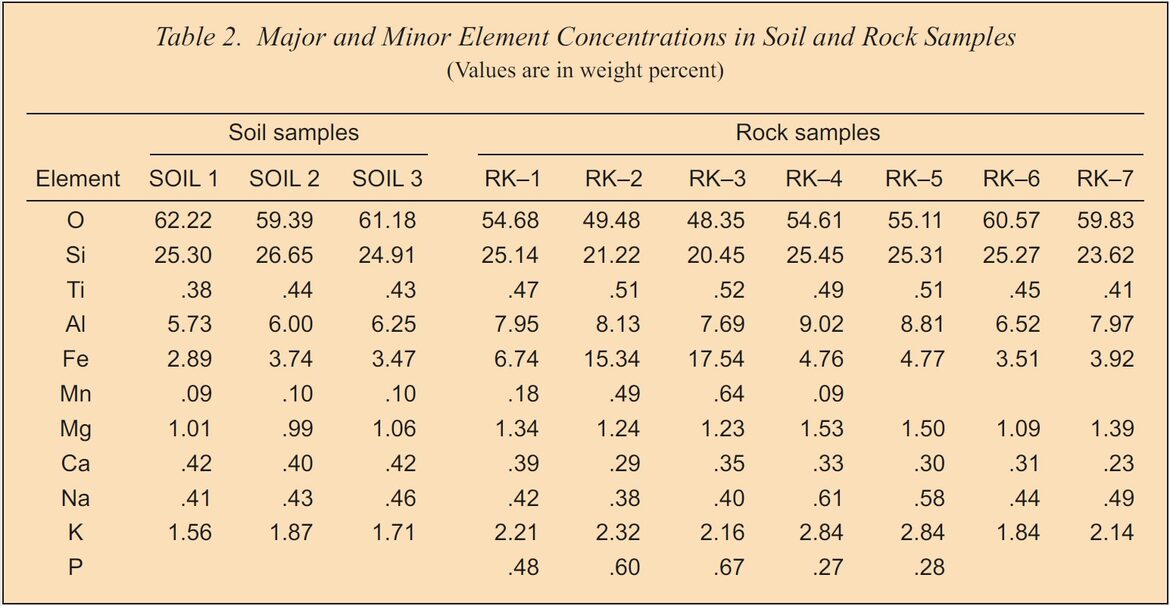
Major and minor element concentrations are as expected for typical soil and for siltstone and shale of sedimentary origin. Si content is high in fulgurite glass and most closely matches the high Si content in soil sampled from the unpaved road. The Al concentration is slightly elevated in some fulgurite glass samples compared to the highest Al concentrations in the soil and rock samples. Fe concentrations are much less in the fulgurite glass samples than in the soil and rock samples. Ti is characteristically less than 1 weight percent, as would be expected in soil and sedimentary materials; however, the Ti concentration is somewhat less in the fulgurite glass samples. The major and minor element concentrations in the fulgurite glass are comparable to the major and minor element concentrations in the soil and rock, suggesting that the soil and rock in the road is the material that formed the lightning induced molten material that cooled and hardened to form the fulgurite glass.
A sample was analyzed that included melted rock (glass) and unaltered rock. A small zone of darkened rock lies between the glass and unaltered rock. Major and minor element concentrations in glass and unaltered rock are similar except for Mn, which is absent in the glass.
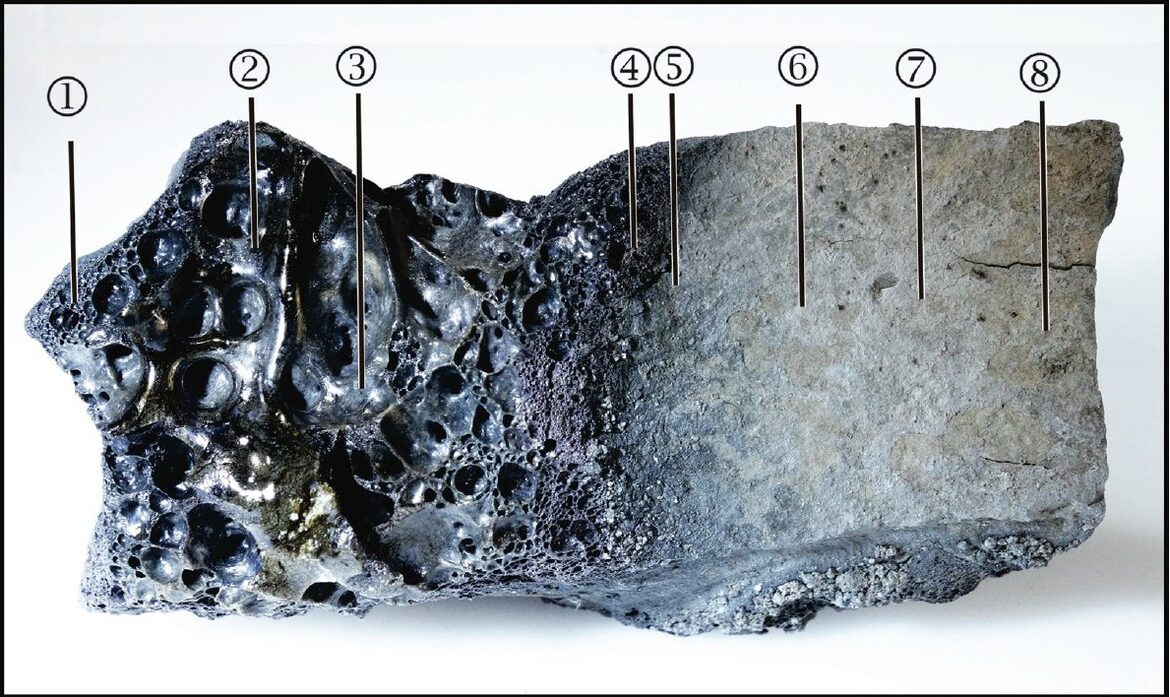
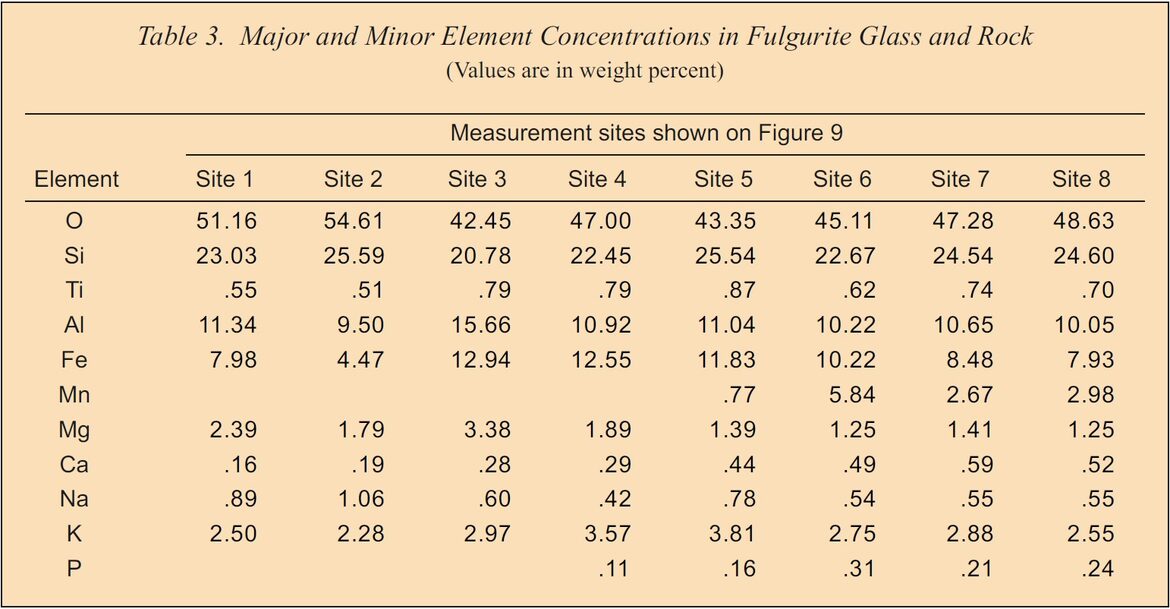
Occurrence of Iron Silicide Nodules and the rare mineral Gupeiite
A small number of metallic nodules were embedded in the Rebersburg fulgurite glass. The nodules were spherical to irregular in shape, bright metallic silver in color, less than 1 mm to 2 cm in size, and most were strongly magnetic. Analysis by an energy-dispersive Xray spectrometer (EDS) indicated that most of the magnetic nodules were iron silicide minerals (silicides) is a binary compound of silicon with another element or group), which are known to occur in both terrestrial and extraterrestrial samples. Iron silicides tend to be more common in extraterrestrial rocks such as meteorites. Their existence in terrestrial rocks is limited by the extremely reducing (oxygen poor) conditions necessary for their formation.
The high energy associated with lightning strikes makes it one of a few natural processes that reduce oxides in target materials. During fulgurite-forming lightning strikes, the extremely high-energy and high-temperature environment generated enables the reduction of oxide minerals to oxygen-poor compounds, such as iron silicides (Essene and Fisher, 1986; Hiltl and others, 2011). The metallic nodules likely were formed by their immiscibility (the inability of two distinctly different liquids to mix) and segregation from the chemically distinct silicate liquid, similar to a drop of oil coalescing from an oil-water mixture. The nodules formed by immiscibility were preserved when the two liquids were rapidly quenched to glasses (Essene and Fisher, 1986).
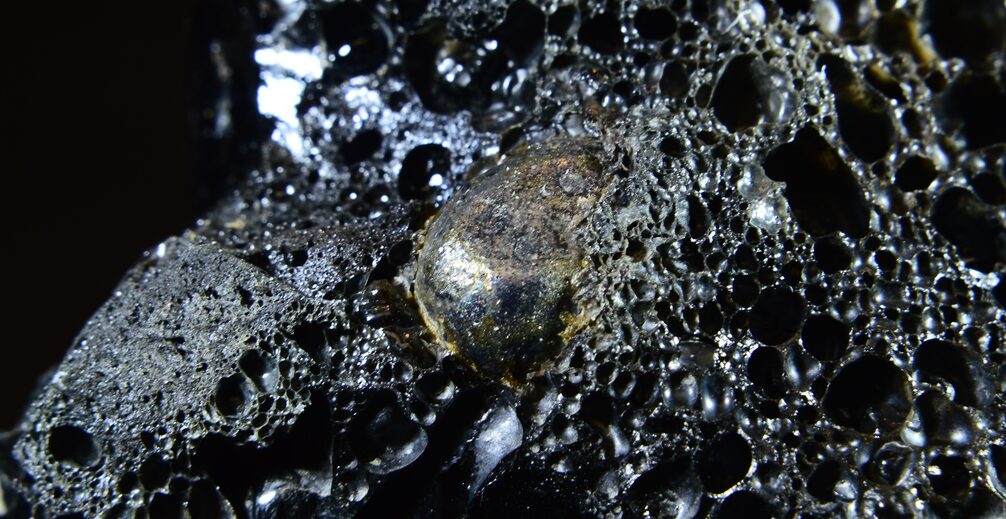
Pasek and others (2012) described two fulgurite samples from York County, Pa., that showed the reduction of iron to a metal that contained an assortment of Fe–Ti and Si–P compounds. In addition to iron silicides present in the Rebersburg fulgurite, preliminary analyses indicate an array of reduced metals, including metallic Si, Si–Al alloys, Fe–Si–Ti alloys, and Al–Si–Mn alloys. The iron silicide mineral gupeiite (Fe3Si) (Yu, 1984) has been positively identified in the Rebersburg fulgurite. The EDS analyses (Table 4) gave the idealized formula Fe3Si. Work is continuing to identify the other iron silicides and metallic alloys in the Rebersburg fulgurite.


